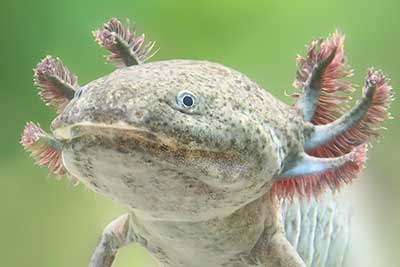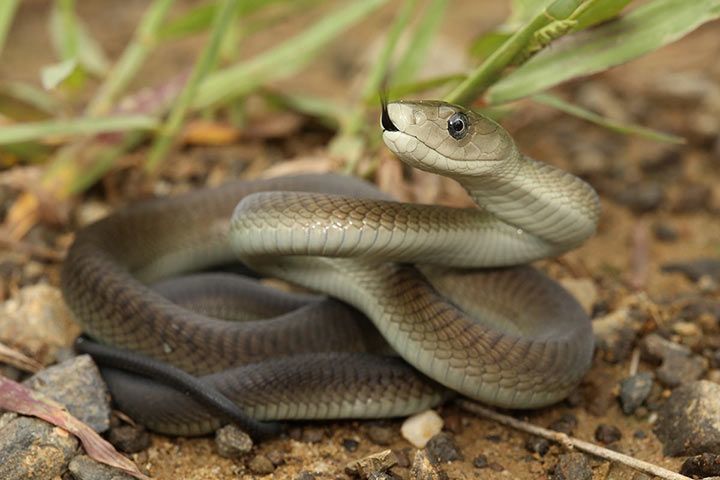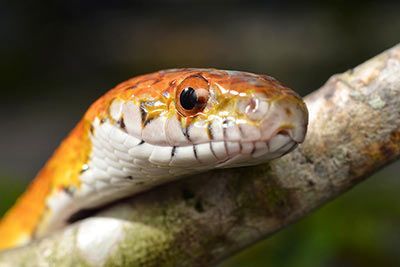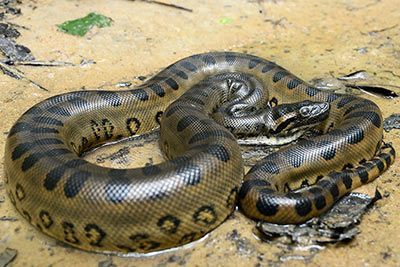Komodo Dragon
Komodo Dragon Facts
| Size | Up to 10.3 ft (3.13 m) (largest specimen) |
| Speed | Up to 12 mph (20 km/h) |
| Weight | 154-365 lb (70-166 kg) |
| Lifespan | 25-40 years |
| Food | Mammals, fish, birds, reptiles, eggs |
| Predators | - |
| Habitat | Indonesia |
| Class | Reptiles |
| Order | Scaled reptiles |
| Family | Varanidae |
| Scientific name | Varanus komodoensis |
| Characteristics | Long, forked tongue |
Main Characteristics
There are more than 3,000 lizard species in the world, but the Komodo dragon holds the record for being the biggest living lizard worldwide. It has been living on this planet for more than 130 millions of years, but it was not discovered before 1912.
Its specific characteristics are its short, clunky legs, the clay-like color, the skin with armored scales, the long tail and the long tongue. Its appearance may remind you of a dragon from medieval legends.
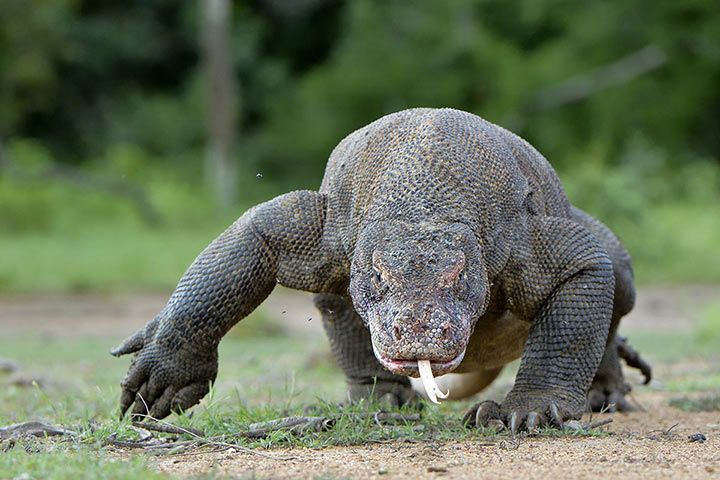
Habitat
Where Do Komodo Dragons Live?
The Komodo dragon only lives on a few Indonesian islands: Komodo (where the name comes from), Rinca, Gili Motang and Flores. It does not have any natural enemies and thus occupies an ecological niche on the islands. It is the biggest carnivore in its habitat.
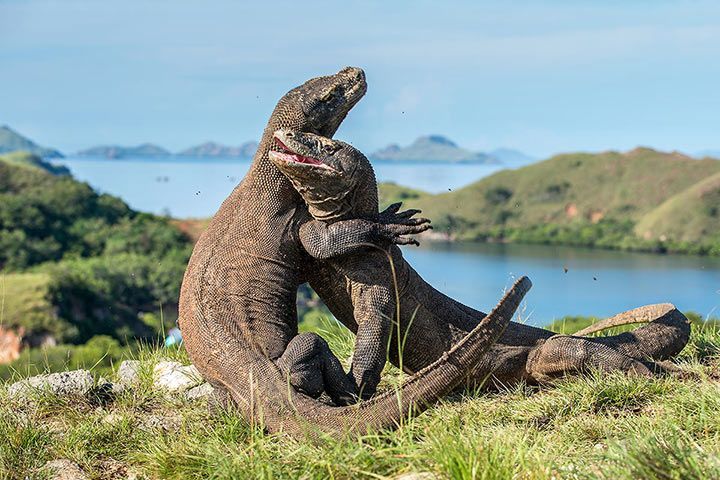
Behavior
What Do Komodo Dragons Eat?
Most lizards are omnivores, but the Komodo dragon exclusively feeds on meat. It uses its tongue to sniff out its prey. Even if its victim is about 6 miles (9.5 km) away, the Komodo dragon can “taste” it already.
How Do Komodp Dragons Kill Their Prey?
Poison or Bacteria? For a long time, people believed that the Komodo dragon transmits bacteria from its mouth when biting, so that the victim dies from an ongoing infection. Yet, meanwhile scientists have proven that Komodo dragons have poison glands which transmit poisonous proteins into the wound of the victim. The poison inhibits blood coalgulation and reduces the blood pressure and therefore causes a severe loss of blood in addition to spasms, shocks and unconsciousness.
How Do Komodo Dragons Hunt?
No matter if pigs, harts, wild buffalos, snakes, or fish – the Komodo dragon never refuses a decent meal. If the loner is hungry, it hides next to a trail and waits for some prey to pass by. Then it attacks with its long claws and its short but sharp teeth. If the prey tries to escape afterwards, the Komodo dragon follows without haste. Once bitten, the victim does not have a chance to get away. The bite contains fatal poison, and it is only a question of time until the animal lies down to die. The Komodo dragon can eat up to 80% of its own body weight in one single meal.
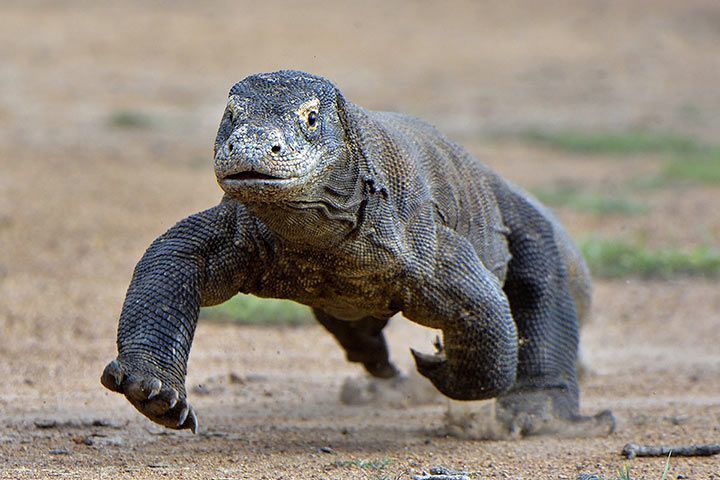
Life Style
What Do Komodo Dragons Do All Day Long?
After waking up the Komodo dragon often likes to take a little sunbath and then tries to find some food for breakfast before taking another long nap somewhere in the shadow. During the late afternoon the Komodo dragon gets up again to get some more food. Of course, it will go to sleep again afterwards.
Anatomy and Appearance
Do Komodo Dragons Have Sharp Theeth?
The dragon has about 60 sharp serrated teeth, which can be up to 0.9 inches (2.5 cm) long. The teeth are being replaced four to five times during the dragon’s lifetime.
Senses and Abilities
Do Komodo Dragon Have a Good Eyesight?
The Komodo dragon can see objects which are about 984 feet (300 meters) away. Yet, the dragon is nearly blind when it’s dark, therefore it spends the night sleeping.
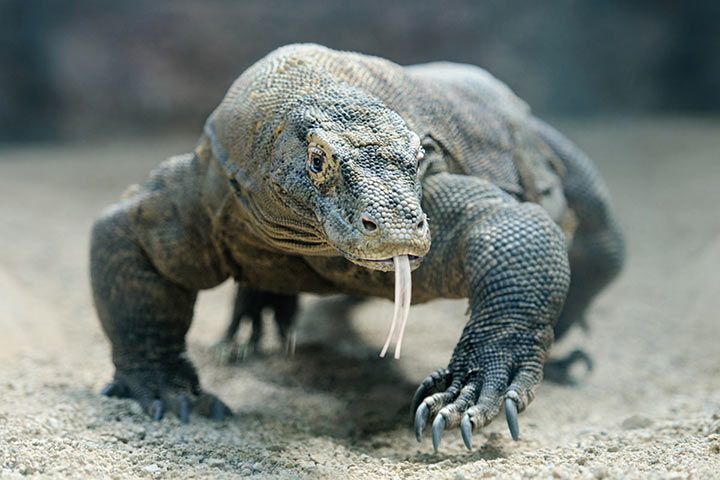
Life Expectancy
How Old Do Komodo Dragons Get?
They can reach an age of up to 40 years, yet in captivity it’s only nine years.
Reproduction
While the adult animals hardly ever need to be afraid of anything, life is not that easy for a young Komodo dragon. After having left the nest, it first has to escape its parents as they sometimes feed on their own offspring.
Fun Facts
Males and Females
There are four times as many male Komodo dragons as female ones out in the wild.







